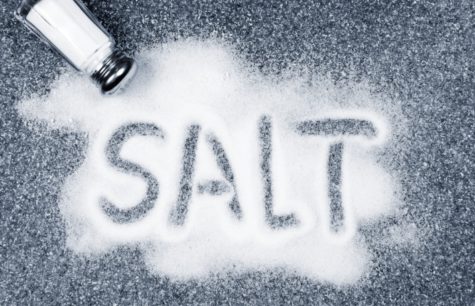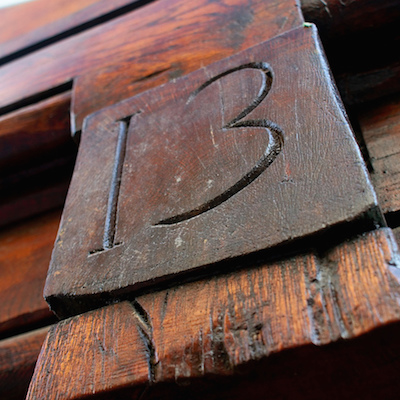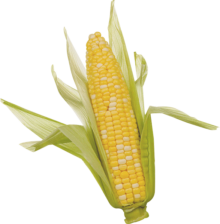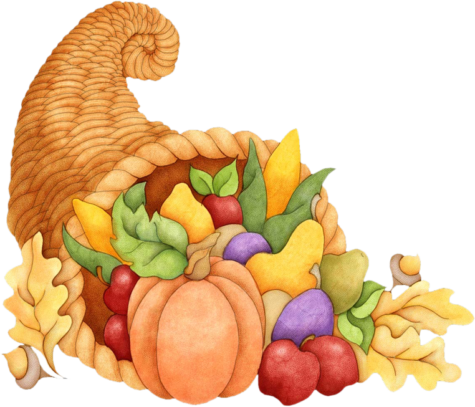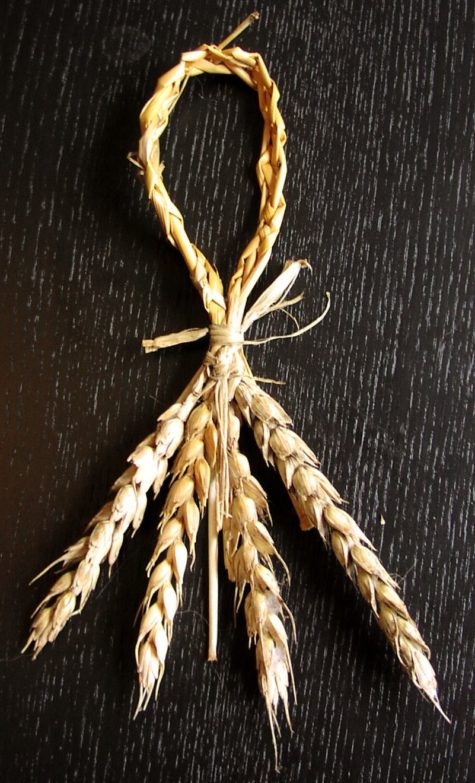Sign of the Sunflower
If you were born between July 23 and August 21, you were born under the sign of the Sunflower. Sunflower signs are warm, open, and natural leaders. You rise to any occasion with confidence and assurance – you have no doubt that you are the perfect person for any challenge, and you know how to reach to the top. You tend to be the center of attention and others look to you for advice and mentoring. You are a loving, faithful and tenderhearted friend. You are generous and enjoy a wide range of intellectual gifts.
Source: What’s Your Sign
Sign of the Acanthus
“Look to my petals for your nurturing.”
If you were born between June 21 and July 22, you were born under the sign of the Acanthus. Sensitivity is the watchword for acanthus flower signs. You are perceptive, and have high intuition in matters of the heart, and environment. You often react to others (even when they don’t speak their feelings, you still know what is going on inside their hearts), and your surroundings. You are warm and sympathetic, and a natural healer too.
Acanthus zodiac flower signs are highly influenced by outside forces – especially the pull of the moon. A secure home life, surrounded by friends and family who love you and you love back often help ground you and keep you from falling prey to negative influences.
Source: What’s Your Sign
Sign of the Lavender Flower
“My beautiful expanse will inspire you.”
If you were born between May 20 and June 20, you are a lavender flower sign. You freckle your landscape with beautiful ideas. You love to share these ideas with other people and get more new insights as you do so. You are expansive in your expressions, and you always seem to be able to find your muse. You are amazingly productive, creative and have an active mind. Sometimes you feel pulled in too many directions, but part of the lavender’s beauty is that it spreads itself far and wide for all to enjoy.
Source: What’s Your Sign
Salt
The sea is full of salt, and so there is an inextricable link between the mineral, salt, and the element of water. However, salt is frequently produced by allowing sea water to evaporate on the ground, and so salt is also associated with the Earth; witness the popular saying “salt of the earth,” meaning that a person is good, grounded, and honest.
The cuboid structure of salt is further reason for it to be a symbol of the earth element, as well as making it an emblem of protection. Salt has a practical use as a preservative of meat, fish, and other foodstuffs; it has therefore taken on the same symbolic significance – as seen in rites and rituals – to sanctify and protect holy or magical places.
It is used for this reason from cathedral services to the Magick Circle. It is possible that this practice is a residue from the time when blood from sacrificial animals was used for this purpose, the blood being sprinkled with salt to soak it up.
Alchemists hold that salt – which represents the human body – is one of the three vital natural ingredients, called the three alchemical principles, and that it forms a trinity with sulphur and mercury.
The use of salt as a means of preserving foodstuffs was invaluable to our ancestors, especially to those making long voyages by sea when fresh meat would be virtually impossible to procure. Salt is also able to bring out flavors in any food to which it is added, and was considered to be so valuable a commodity that it was used as currency to pay people for their work; hence the word ‘salary’ from the Latin, salarium.
Because salt is valuable in so many ways, spilling it is considered to be a bad omen. This is still counteracted by making a cross in the salt, then throwing some salt over the left shoulder, and into the “eye of the Devil.”
Omens and Superstition:
It is unlucky to borrow salt, and still more so to return it; if the lender wants it back, she must “borrow” it from the original borrower.
To spill salt is a very ill omen. In Yorkshire, it is said that a tear must be shed for every grain spilt. It must not be scraped up, but a little should be thrown three times over the left shoulder to avert the misfortune. If it scatters in the direction of another person, bad luck will come to him, or to a member of his family.
A salt cellar overset between two friends is a sign that they will quarrel.
In some areas, it was thought that the first things carried into a new house, before any of the furniture was brought in, must be a box of coal and a plate of salt. In England, at Eastnor, people leaving a house were warned that they mush leave bread and salt behind them, otherwise bad luck would follow both for them and for the new tenants.
In his Description of the Isle of Man, Waldron says that Manxmen in his time would not “go out on any material affair without taking some salt in their pockets, much less remove from one house to another, marry, put out a child, or take one to nurse without salt being mutually exchanged.”
Cattle were stained with salt in the Outer Hebrides before being moved from one pasture to another. Dairymaids dropped a pinch into their pails when they began milking, and butter makers into their churns, to avert the spells of witches.
At sea, the word “salt” must not be spoken, and the stuff itself must never under any circumstances be thrown overboard. The men of the Tweed sprinkle their nets with salt, and throw it into the water, to placate the river spirit and ensure the safety of the boats.
From: The Encyclopedia of Superstitions
Thirteen
Thirteen has long been regarded by many as an unlucky or inauspicious number. The Kaballa, for example, says that there are 13 spirits of evil. It’s still considered unlucky to have 13 people sitting down to dine because it is a reminder of the Last Supper, where Christ was betrayed by one of the 12 disciples who were eating with him, Judas Iscariot.
Similarly, in Norse mythology, when an honorary banquet was held in Valhalla for Baldur (god of nobility, redemption and admirable strength) among other twelve Norse gods. Loki (the trickster) came to the banquet as the uninvited thirteenth guest. Afterwards, we learn Baldur was slain by Hoor who, to execute the god, was given a magic spear by Loki.
Further, Friday 13th in 1307 was the date on which the assembly of the Knights Templar were systematically assassinated.
However, it’s not all black for the number 13. Despite the year being divided up into 12 calendar months, there are actually 13 lunar months, or 13 sets of 28 days in a year. Therefore the Mayans regarded 13 as an auspicious number. There is also said to be a secret, hidden, thirteenth sign of the Zodiac, Arachne, the spider goddess whose web binds the network of the Heavens.
In ancient cultures, the number 13 represented femininity, because it corresponded to the number of lunar (menstrual) cycles in a year (13 x 28 = 364 days). The theory is that, as the solar calendar triumphed over the lunar, the number thirteen became anathema.
In Classical Antiquity, the thirteenth member of a group was considered to be the leader, the exalted one. Zeus sits at the head of the 12 Olympian deities, for example, in the same way that Christ sat among his disciples or King Arthur with his twelve knights at the Round Table. A coven consists of 12 members plus a leader.
In Greek mythology, the thirteenth in a group appears as the most powerful and the most sublime. For example, Ulysses, the thirteenth of his group, escapes the appetite devouring of the Cyclops.
In addition, a baker’s dozen is one more than 12, so 13 effectively represents good value for money. This stems from medieval England when bread was a scarce commodity and punishment was harsh for bakers who short-changed their customers. Therefore they would give away a free loaf with every 12 sold to make sure that no mistakes were made.
The Apollo 13 moon landing was beset by bad luck, and an explosion could have resulted in disaster. However, no one died and the crew returned to Earth safely, so it could be said that the number 13 was lucky for them.
In Hindi, it’s called as ‘Terah‘, which means ‘your’s’. It represents your karma. In the spiritual context, it could also mean that every thing belongs to one God/Creator including the soul present in every human being.
According to famous story of Guru Nanak Dev Ji, when he was an accountant at a town of Sultanpur Lodhi, he was distributing grocery to people and when he gave groceries to the 13th person he stopped there because in Gurmukhi and Hindi the word 13 is called Terah, which means yours. And Guru Nanak Dev Ji kept on saying, “Yours, yours, yours…” remembering God. People reported to the emperor that Guru Nanak Dev Ji was giving out free food to the people. When treasures were checked, there was more money than before.
The number 13 is shown in several places on the United States’ currency bills, and in this instance there is no hidden sinister meaning; simply, there were 13 states that joined the original Union.
In the Tarot, 13 is the number of the Death card. It symbolizes the death to the matter or to oneself and the birth to the spirit: the passage on a higher level of existence. This represents initiation, a test, and facing fears. It is a number that cleans and purifies.
If we are looking at the Zodiac, a clock, and even the months of the year it can be said that 13 is the number of eternal return. How is this so? 12 + 1 = 13, therefore, the thirteenth hour (month) is also the first.
The number 13 in the Coperos religion (small culture in Brazil) is like a God number. All coperos must know that this number can save humankind.
According to R. Allendy, this number “represents a principle of activity 3 exerting in the Unit of a whole 10 which contains it and which makes it produce only one cycle of perpetually identical renewal (1 + 3 = 4). Or it is the mechanism of its organization which submits the Universe to a permanent mode of oscillations and which leads it to specialize in nature.”
Thirteen is the number of skies for the Aztecs, and the heir of the Ancient of Days had thirteen buckles and his beard thirteen wicks. The ancient Mexico divided also the time in cycles of 52 years divided themselves in four periods of thirteen years. They had also a week of thirteen days. Thirteen was also, for the Aztecs, a time number, which represented the completion of the temporal series.
In ancient Egypt, the number thirteen was held to be the precursor to completion, there are thirteen steps upon the ladder that leads to eternity. Upon the thirteenth step it is said the soul reaches the source of itself and attains spiritual completion.
This can be seen in the story of Osiris (the Egyptian god of life, death and powerful solar symbol) who was murdered by his brother Typhon. Typhon stole Osiris’ body and cut it into fourteen pieces and scattered them about the earth. Isis, Osiris’ wife and sister collected his body with intent to restore Osiris back to life. In her quest to revive her beloved, Isis was only able to reclaim thirteen of the fourteen body parts (the fourteenth part being Osiris’ penis which interestingly fell into the Nile and was eaten by a school of fish).
In mathematics, the number 13 is the sixth prime number, and the smallest emirp (a prime that is a different prime when reversed). It is also a Fibonacci number, a happy number, the third centered square number, and one of only 3 known Wilson primes.There are 13 Archimedean solids, and a standard torus can be sliced into 13 pieces with just 3 plane cuts. There are also 13 different ways for the three fastest horses in a horse race to finish, allowing for ties, a fact that can be expressed mathematically by 13 being the third ordered Bell number.
Evidently, ancient Iranian civilization and Zoroastrianism considered the number 13 sinister. Since the beginning of Nourooz tradition, the 13th day of each new Iranian year is called Sizdah Be-dar. This tradition is alive among Iranian people both inside modern Iran and abroad. Since Sizdah Be-dar is the 13th day of the year, it is considered a day when evil’s power might cause difficulties. Therefore, people desert cities and urban areas for that day and camp in the countryside. Even in the current era, after the 1979 Revolution, and against the wishes of the Islamic government, this day is an official holiday in Iran and a majority of people honor its traditions.
Fear of the number 13 has a specifically recognized phobia, Triskaidekaphobia, a word which was coined in 1911. The superstitious sufferers of triskaidekaphobia try to avoid bad luck by keeping away from anything numbered or labelled thirteen. As a result, companies and manufacturers use another way of numbering or labeling to avoid the number, with hotels and tall buildings being conspicuous examples (Thirteenth floor).
Colgate University considers 13 a lucky number. They were founded in 1819 by 13 men with 13 dollars, 13 prayers and 13 articles. To this day, members of the Colgate community consider the number 13 a good omen. In fact, the campus address is 13 Oak Drive in Hamilton, New York, and the male a cappella group is called the Colgate 13.
Some superstitions associated with the number 13 include the following:
To see a black cat on Friday 13 leads to misfortune. It is preferable not to go out on that day, but if one leaves by a door, it is always necessary to enter by the same door. The superstition of Friday 13 was also revivified in this era of the computer by some viruses introduced into the computer systems appearing only on Friday 13.
Compiled from various sources including:
Element Encyclopedia of Signs and Symbols
Corn
- Protection
- Luck
- Divination
One of humans most treasured plants, it has always been a great source of nutrition as well as providing medicine. It is closely related to the sun, harvest, health and the earth goddess.
Corn, also known as maize, is the most important food crop of the Americas, cultivated by hundreds of different tribes. Even some tribes who were too nomadic or lived too far north to grow it themselves had corn as part of their diet, since they traded extensively with corn-farming neighbors. Corn is one of the Three Sisters of the northeastern tribes, so called because corn, squash, and beans were traditionally planted together by Native American farmers.
Corn played an important mythological role in many tribes as well– in some cultures Corn was a respected deity, while in others, corn was a special gift to the people from the Creator or culture hero. In addition to its importance as a food source, corn also played a ceremonial role in many tribes, with sacred corn pollen or cornmeal being used as ritual adornment and spiritual offerings.
Corn is a common clan symbol in many Native American cultures. Tribes with Corn Clans include the Muskogee Creek tribe (whose Corn Clan was named Atchialgi or Vce’vlke in the Muskogee language), the Navajo, the Mohave, and the Pueblo tribes of New Mexico (many of whom have multiple Corn Clans such as the Blue Corn Clan and Yellow Corn Clan.) Many tribes, such as the Caddo and the Pueblo tribes, also have a Corn Dance among their tribal dance traditions.
Source: in5d
Cornucopia
Also called the Horn of Plenty, the cornucopia is often depicted in paintings and on friezes where it symbolizes the notion of boundless abundance, as flowers, fruits, sheaves of wheat, and other produce spill out of a hollow horn or a twisting basket woven in the shape of the horn.
The origin of the cornucopia is found in the Greek myth of Amalthea. Amalthea fed the infant Zeus a drink of goat’s milk and was given the brimming goat’s horn as a reward. Sometimes the infant Zeus is depicted being fed the milk from the horn itself.
The cornucopia, as a symbol of a bounteous harvest, is also associated with Ceres, the Goddess of corn, and also with Fortuna, Goddess of good fortune. The idea of a bottomless, bounteous container has similarities to the symbol of the cauldron.
From: The Element Encyclopedia of Secret Signs and Symbols
Brighids Cross
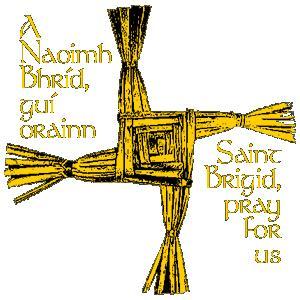 Corn dollies are frequently constructed in the shape of Brighids Cross, and although the symbol itself predates Christianity, it was given the name of the saint in order to ease the passage of acceptance of the new religion.
Corn dollies are frequently constructed in the shape of Brighids Cross, and although the symbol itself predates Christianity, it was given the name of the saint in order to ease the passage of acceptance of the new religion.
The symbol is reminiscent of the ancient Sun symbol, the swastika, its four arms pointing to the cardinal points of the compass. They also represent the Elements, with the point at the center indicating the fifth element of quintessence.
From: Encyclopedia of Secret Signs and Symbols
Corn Dolly
These days, the corn dolly generally gathers dust in gift shops, an innocuous souvenir for tourists in rural areas, particularly in the UK. However, its origins as a powerful magical symbol go back thousands of years to pre-Christian times. It may come as a surprise that the corn dolly hanging on the kitchen wall can trace its roots back to a particularly bloody ritual.
In any agrarian culture, the success of the crops is all-important and in Northern Europe the harvest produce was essential to survival during the winter period. It was the generally held belief that the spirit of the harvest – in this case, the versatile grain crop – resided in the plant, and once the plant was cut down then the spirit effectively became homeless.
In order to provide a new home for this spirit, the farmers made a corn dolly from the very last stalks of the crop. The dolly would spend her time indoors over the winter, waiting to be plowed back into the ground at the start of the new season.
In places where the corn dolly custom was not established, the last few stalks of corn were violently beaten into the ground, thus driving the spirit back into the earth.
In some districts corridors of standing corn were left from one field or plot to the next, so that the spirit would have a way of retreat till the last strip of corn was reached. The reapers would then line up before it and throw their sickles at it, so that the goddess would never know whose hand had cut the last stalks.
These were then gathered up reverently and woven into the image of the spirit or Corn Goddess, who thenceforth held a place of honor at the harvest home feast and then by the family hearth. On Plough Monday it was taken to the fields and interred in the first furrow of the new season, ready to work the necessary magic for the next harvest. “Dolly” may be a corruption of “idol” or may have come directly from the Greek word eidolon, which means apparition or that which represents something else.
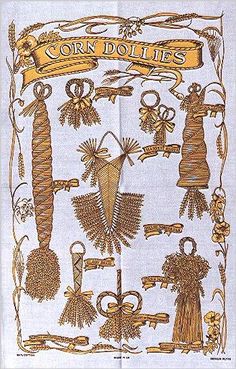 The dolly was made into a shape of an old woman, representing the Crone aspect of the Harvest Goddess. She was drenched in water as a further propitiation to the Gods and to ensure that plenty of rain would feed the harvest to come. Different areas had different styles of corn dollies.
The dolly was made into a shape of an old woman, representing the Crone aspect of the Harvest Goddess. She was drenched in water as a further propitiation to the Gods and to ensure that plenty of rain would feed the harvest to come. Different areas had different styles of corn dollies.
However, the custom of preserving the spirit of the harvest was not always carried out in such a genteel way. The Phrygians, who lived in central Asia Minor and worshiped the Mother of the Gods, Cybele, carried out a different sort of ceremony.
Their corn dolly was formed from thickly plaited sheaves of corn formed into a tall column. Any stranger found in the vicinity was captured in the belief that his presence there would mean that the spirit of the harvest had possessed his body and caused him to wander into the area. The hapless stranger was then trapped within this cage of corn and then beheaded in the belief that the blood that fell upon the ground contained the valuable “soul” of the crop.
From: The Element Encyclopedia of Secret Signs and Symbols
Pink
 Symbolic Meaning of the Color Pink:
Symbolic Meaning of the Color Pink:
- Femininity
- Innocence
- Good health
- Love
- Patience
Pink is the official color for little girls and represents sugar and spice and everything nice. Pink is the sweet side of the color red and is the color of universal, unconditional love. While the color red stirs up passion, aggression, and action, large amounts of the color pink can actually create physical weakness.
Pink is the ultimate feminine color, both flirty and girlish and innocent at the same time. Pale pink is used as the symbol for a baby girl, just as pale blue is used for baby boys. The use of pink and blue emerged at the turn of the century, the rule being pink for boys, blue for girls. Since pink was a stronger color it was best suited for boys; blue was more delicate and dainty and best for girls. And in 1921, the Women’s Institute for Domestic Science in Pennsylvania endorsed pink for boys, blue for girls. This feminine angle is why the color pink has been adopted as a symbol of gay pride.
The pink ribbon is an international symbol of breast cancer awareness. Pink ribbons, and the color pink in general, identify the wearer or promoter with the breast cancer brand and express moral support for women with breast cancer. Pink ribbons are most commonly seen during National Breast Cancer Awareness Month.
Other meanings associated with the color pink:
- The phrase “in the pink” means healthy.
- The expression “tickled pink” means being happy, content.
- The saying “pink collar” refers to a female office worker, often used in a derogatory fashion.
- The word “pink” means to cut, notch, or make a zigzag.
- A “pink slip” is a notice that you’ve been fired from your job.
- A “pinko” is a person who is extremely liberal, a socialist or a communist.
Collected from various sources



